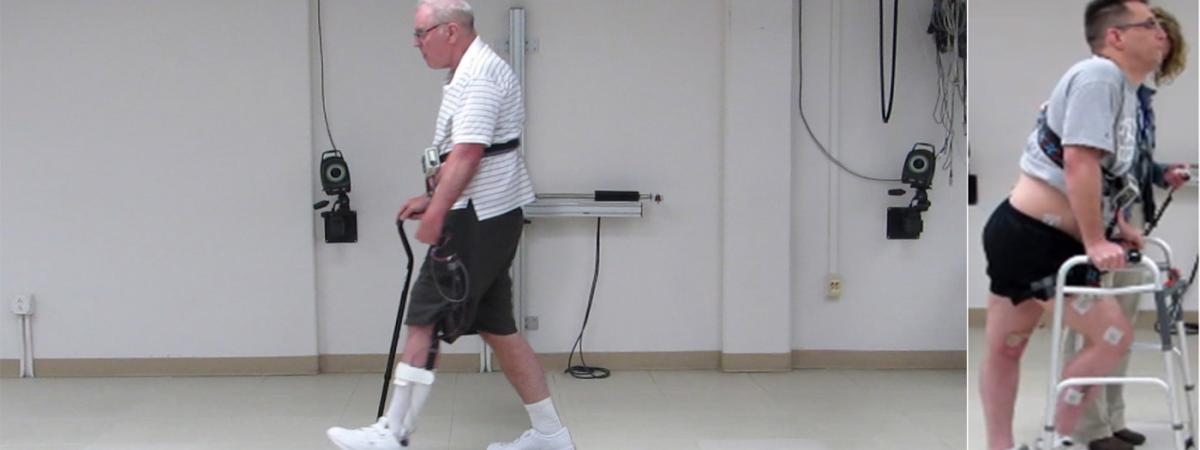Robert Bush has multiple sclerosis (MS), which sapped his ability to walk five years ago. Joseph McGlynn suffered a stroke that seriously impaired his left side, also five years ago.
Using technology designed by Case Western Reserve University and the Advanced Platform Technology and Functional Electrical Stimulation centers at the Louis Stokes Cleveland Veterans Affairs Medical Center, the two men got their feet back under them.
Two studies, published in the American Journal of Physical Medicine and Rehabilitation, show that functional electrical stimulation (FES) significantly helped McGlynn and Bush to effectively walk at the medical center.
“I went in there and I could barely take two steps,” said Bush, 42, who researchers believe is the world’s first MS patient to “test-drive” an implanted FES system. The proof-of-feasibility test lasted 90 days. “At the end,” said Bush, of Columbus, Ohio, “I was walking down the hallway. To me, it was monumental.” Watch a video of him walking with and without the system.
McGlynn, 69, of North Royalton, Ohio, could walk with a cane, but not easily. With the technology switched on, he covered far more ground and his pace was twice as fast during his 30-week study.
“It’s helped with balance and confidence,” said McGlynn, who used to tread a lot of stairs maintaining equipment at a steel plant. “I’m confident now that I can walk without stumbling and falling.” Watch a video of him walking with and without aid of the system.
Nathan Makowski, an investigator at the Cleveland FES Center, created by Case Western Reserve and the Cleveland VA, said that FES technology has been used primarily for therapy in stroke patients in the past. “This, though, is a more long-term assistive system,” he said.



